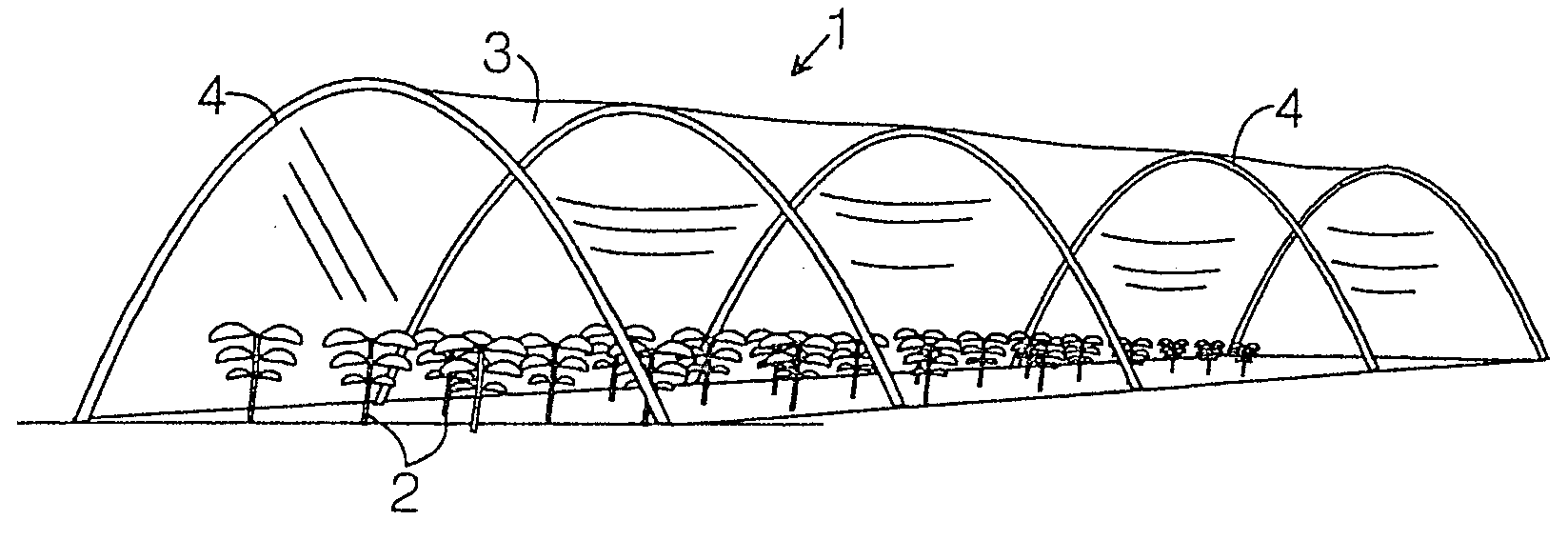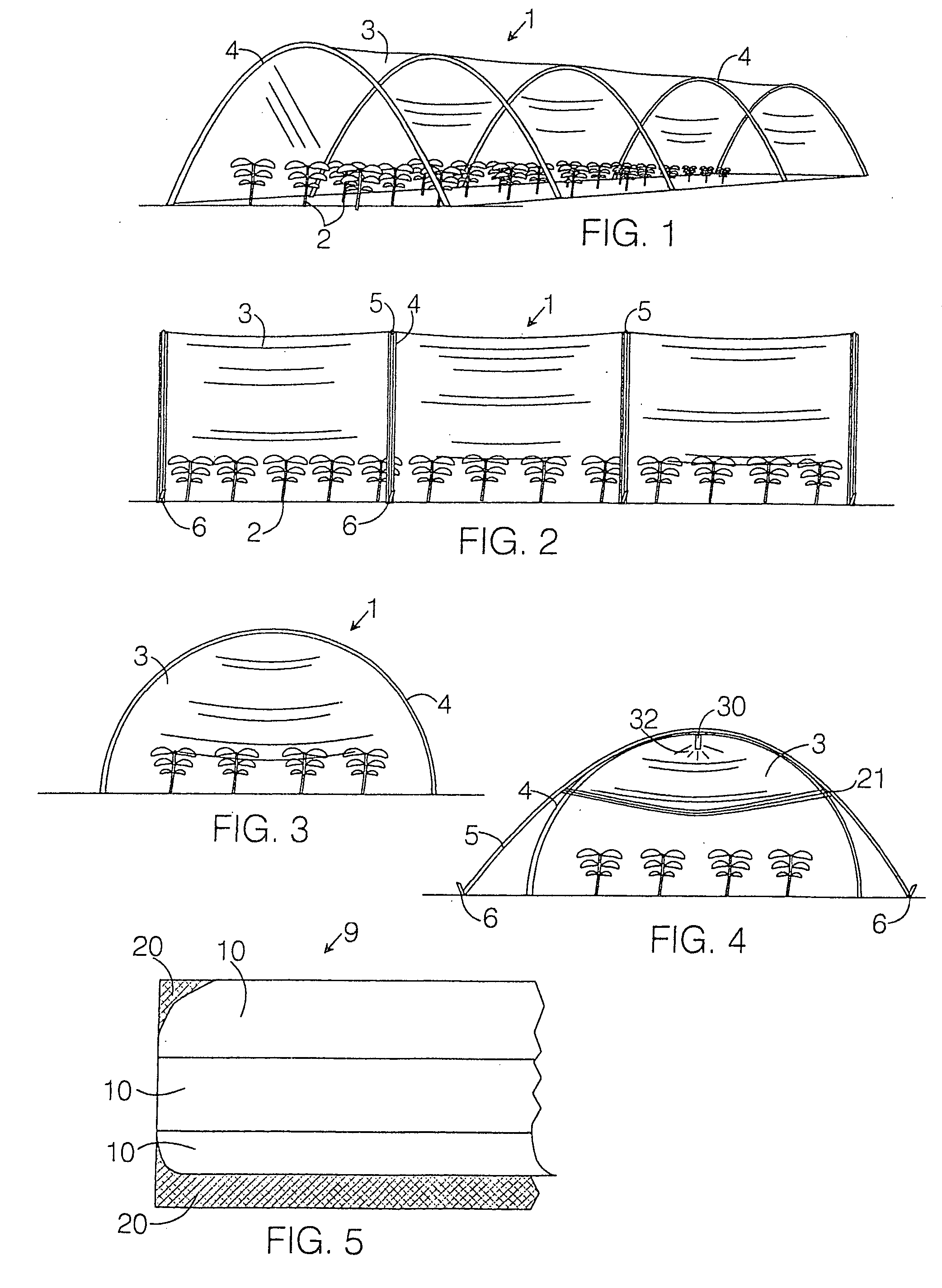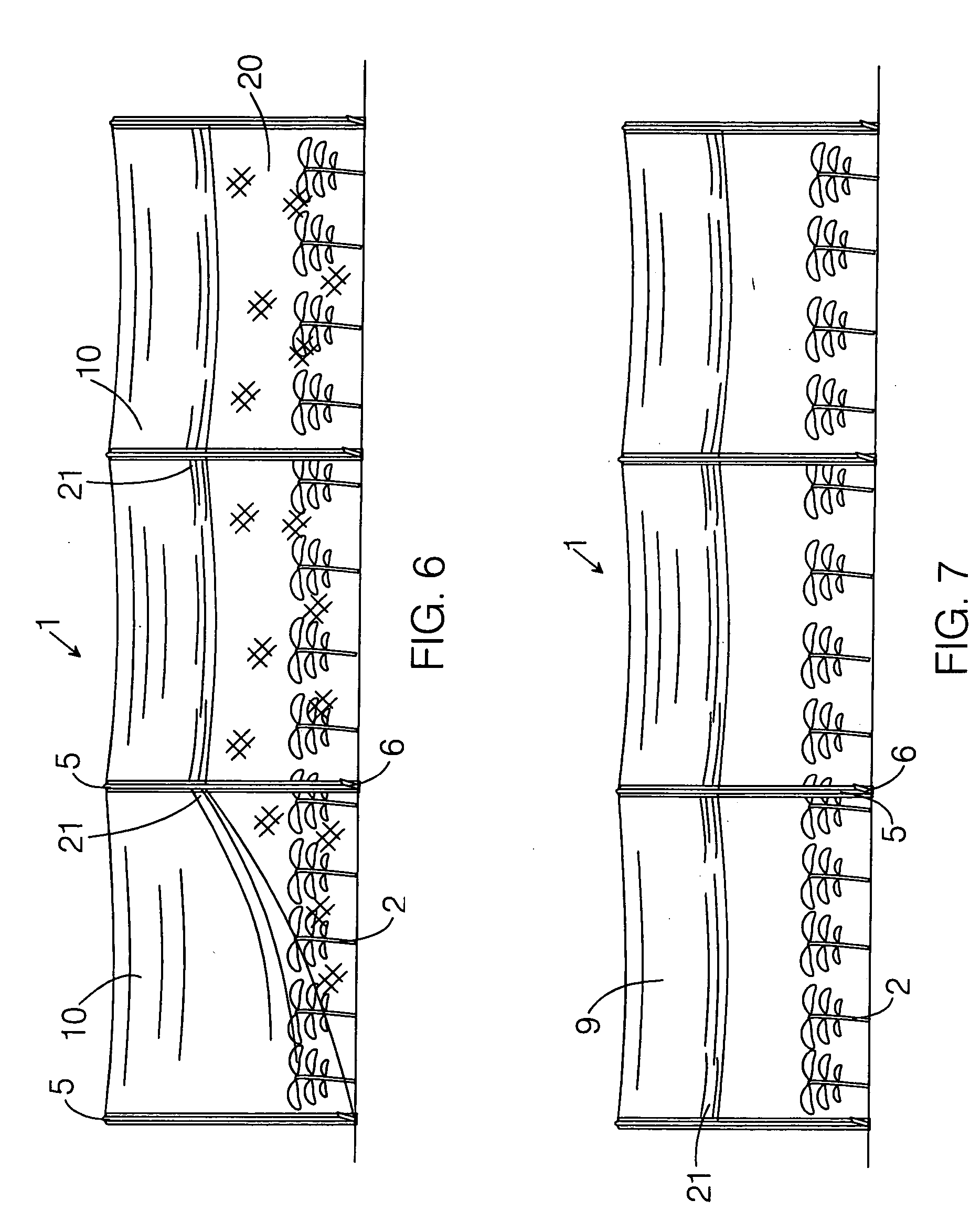Where it is undertaken, there are a number of natural conditions that limit its effectiveness if not to say enjoyableness.
Additional perennial hazards include wind, hail, insects, birds, and inappropriate rainfall, whether excessive or deficient.
In addition, there are arable areas of the country where the average
growing season is too short for most plants of interest.
Although greenhouses provide good protection from these hazards and can extend the effective
growing season, they can be impractical for small-scale growers.
While the Water Fence offers protection from frost and wind, it is not effective against high winds, hail, and
insect infestation.
Additionally, it is cumbersome to deploy, and tends to break easily because of the weight of the water it has to support.
Also, the water it contains as an intrinsic feature is susceptible to
algae growth, which increases the
opacity of the cover, with the obvious detrimental consequences for the growth of the plants it is protecting.
In general, any of the prior-art covers that are sufficient to give frost protection and wind protection tend to reduce the solar
radiation available to the
plant to a degree that is detrimental to
plant growth.
Thus, they are limited in the protection they provide against insects and many other ambient hazards.
Also, though it retards the
radiation from the plants that can lead to frost on cold, clear nights, it is not that good at frost protection, since it leaves the plants in contact with
ambient air.
Also it does nothing to guard against insects and very little to protect against wind.
Indeed, because of its structure, it is itself vulnerable to high winds.
Some of them have supports made of
metal, which heats up due to insulation, with the result that the elevated temperatures accelerate the deterioration of the plastic cover.
Also, the
metal supports
rust and abrade the covers, and generally become unsightly over time.
When the supports are wood, the drawbacks are rot and loss of strength as time passes.
The biggest criticism of the supports of traditional row covers is that they do nothing but support the plastic cover.
They do not contribute to the security of the
system, and as a consequence, additional components have to be added to it, reducing the flexibility and introducing drawbacks of their own.
Unfortunately, this approach is vulnerable to failure in moderate to high winds, since the
spatial localization of the affixing technique causes enhanced stress at those points.
This results in a tearing of the plastic cover and potentially a sudden and complete ripping away, that is, failure, of the cover.
Unfortunately, because of the unitary nature of the Robinson device, the cover cannot easily be removed for venting,
plant maintenance, or harvesting.
While it provides some frost protection, it does not protect against wind.
Further, it inhibits
plant growth because it rests directly on the plants.
Additionally, routine tending of the plants, such as should be done in all gardens, is burdensome because the device needs to be lifted from, and then re-secured to, the ground each time access to the plants is desired or necessary.
A
disadvantage of the systems of Anderson and Koziol is the amount of effort necessary to release the cover and secure it to the supports, as needs to be done each time one wishes to directly access the plants.
Another
disadvantage is that the cover is affixed to the supports at specific points, which concentrates the stress arising from wind and rain.
With the stress thus concentrated, the cover is highly susceptible to tearing, and thus failing, potentially abruptly and completely.
 Login to View More
Login to View More  Login to View More
Login to View More 


